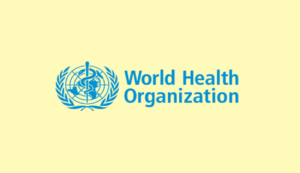WHO Claims: It has been abolished under the Public Health Emergency classification in India
WHO Claims: Among Indians in the late 1950s, a bacterial eye illness called trachoma dominated causes of blindness. The World Health Organisation claims it has been eradicated in India under public health emergency classification. Reported Media, the WHO helped India on Tuesday for the accomplishment only attained by Nepal and Myanmar in the area.

Saima Wazed, Regional Director, WHO South East Asia, presented an official Certification to Aradhana Patnaik, Additional Secretary and Mission Director, National Health Mission, Ministry of Health and Family Welfare during the WHO’s South East Asia Region, Regional Committee meeting convened in the national capital on Tuesday.
Trachoma is what?
Common bacterial eye infections like trachoma mostly affect poorer groups living in inadequate surroundings.
Trachoma is caused by what?
The bacterial infection known as trachoma is brought on by Chlamydia Trachomatis. If untreated, trachoma causes permanent blindness; it is infectious and spreads by touch with the eyes, eyelids, nose or throat secretions of infected individuals.
Trachoma strikes how many people?
A neglected tropical illness, trachoma affects around 150 million people globally, according to WHO. WHO estimates that this infectious eye illness affected around 150 million individuals, leaving almost six million lost vision. Many Trachoma sufferers run the danger of visually impairments.
The frequency of trachoma in India
People in India suffered from the virus most in 1950–60. The Indian government started the National Trachoma Control Program in 1963 and subsequently included Trachoma control initiatives within India’s National Program for Control of Blindness (NPCB) to help to reduce the increasing Trachoma incidence.
Trachoma case decrease in India
After the government campaign, trachoma occurrences dropped dramatically; in 1971, they came to five percent. Thanks to many treatments under the National Program for Control of Blindness & Visual Impairment (NPCBVI), the number of cases has dropped dramatically and now comes within one percent. Reported Media.
India proclaimed in 2017 free from Trachoma.
Following the WHO SAFE approach used across India, India was proclaimed free from Trachoma in 2017. Under the plan, many steps—including surgery, medicines, face cleansing, ambient sanitation—were taken to eradicate the illness. Still, monitoring trachoma incidences in every Indian district starting in 2019 until 2024 kept on.
India’s trachoma eradication
ous Trichiasis (TT only) Survey, which also was conducted in 200 endemic areas of the nation under NPCBVI from 2021–24, WHO declared India from Trachoma and hailed its accomplishment in eradicating the illness as a public health hazard.





